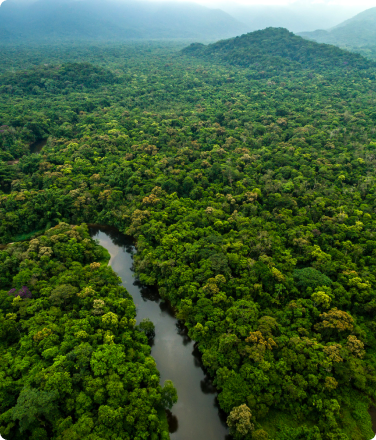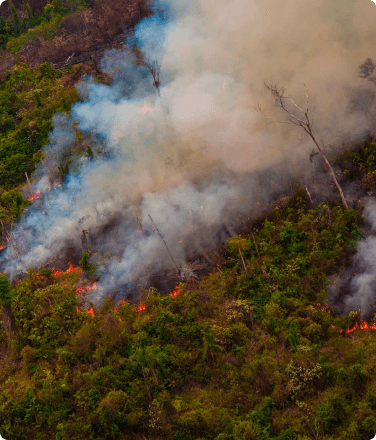- 17 land titles were secured for Indigenous communities in the Peruvian Amazon in record time—more titles were established in ten months than were possible in the previous three years.
- Land titles are the most effective way to reduce deforestation rates in Indigenous peoples’ territory, resulting in a 66% reduction in forest cover loss.
- New strategic thinking has enabled this success, creating a model that can be replicated for real results in the fight against the effects of climate change.
A Historic Achievement
“Today is a day for celebration,” said Miguel Guimaraes Vásquez, Vice President of the Interethnic Association for the Development of the Peruvian Rainforest (AIDESEP), an organization that represents multiple ethnic groups and acts as a structure for Peru’s Amazonian Indigenous movement.
A Strategic Shift Yields Greater Results
The process of securing land titles ranges from slow and bureaucratic to extremely dangerous. According to Guimaraes Vásquez, “There are Indigenous leaders who have demanded legal recognition of their territories, and the only response has been murder—more than 30 Indigenous leaders murdered just for seeking the titling of their territories and the recognition of their ancestral lands.”
But for Roni da Silva, Ticuna Community Forest Monitor Trainer with the Federation of Ticuna and Yahuas Communities of Bajo Amazonas (FECOTYBA), the question of land titles is non-negotiable:
If we don’t know our own borders, how can we know what we are defending? Many loggers take advantage of communities without titles and, what’s more, we have seen deforestation rates drop when a community gains legal recognition.
– Roni Da Silva, Forest Monitor Trainer
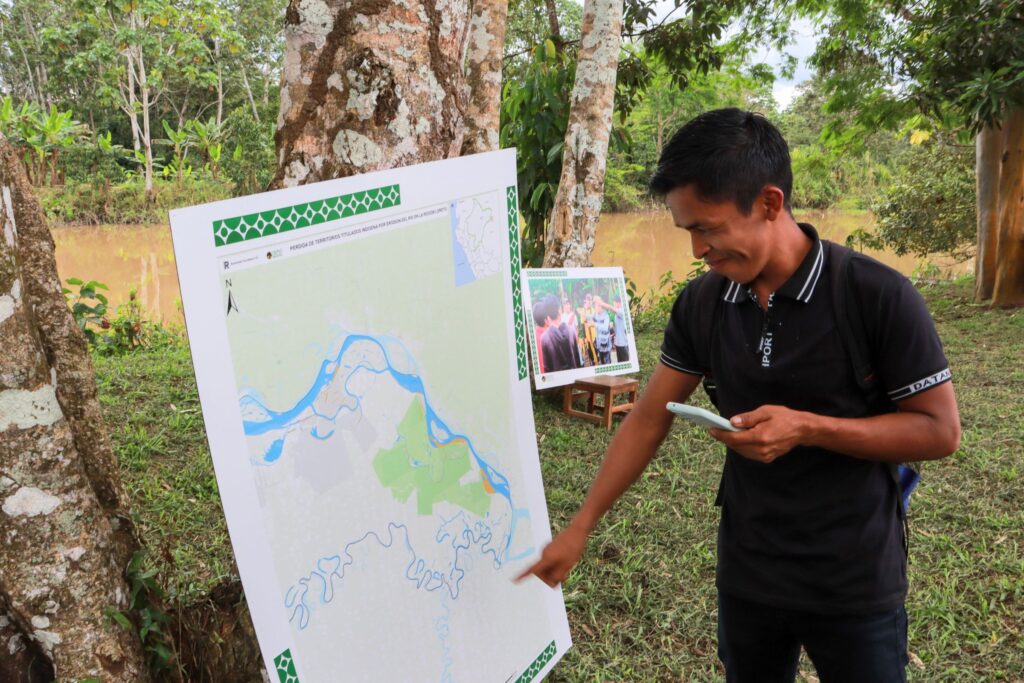
Land titles have proven to be the most effective way to protect Indigenous land from deforestation, with titled land experiencing a 66% decrease in deforestation. Legal land ownership allows Indigenous communities to hold illegal loggers and land-grabbers accountable. Additionally, these titled lands act as a buffer zone, protecting adjacent Indigenous territories from invasion.
AIDESEP has been working since the 1980s to raise funds and petition the Peruvian government for the recognition and titling of Indigenous lands. In the past, they were obligated to work through intermediaries who provided support and strict guidance in the titling process. “The group financing the titling project were always the ones that sat at the negotiating table, and AIDESEP was left to the side,” said Waldir Azaña, Coordinator of the Center for Territorial Information and Planning (CIPTA) at AIDESEP. “In this partnership with Rainforest Foundation US, we feel that we are trusted to manage these funds, and we are the ones at the negotiating table.”
The Ticuna land titles were gained in record time, using a new methodology piloted by AIDESEP and RFUS. This new strategy began with a four-year agreement between AIDESEP and the regional government of Loreto through which the government agreed to contract soil analysts, lawyers, and Geographic Information System (GIS) specialists who accompanied the Indigenous communities as reinforcement to their titling team. RFUS provided logistical and financial support.
“We are developing a low cost, high impact model to title communities in less time,” said Wendy Pineda, Project Coordinator of RFUS Peru. AIDESEP has been able to invert the power dynamic by reorganizing the way in which Indigenous communities interact with the bureaucracy of the Peruvian government. Instead of individual communities petitioning the government for land titles, AIDESEP was able to represent all 17 communities, bringing their petitions before the government with a strategy to demarcate and title an unprecedented 17 titles at once. And, since the communities were working together on this strategy, AIDESEP was able to help reconcile internal border disputes and present a unified front to the government.
Meanwhile, regional Indigenous organizations like the Regional Organization of Indigenous Peoples of Eastern Peru (ORPIO) and the Federation of Ticuna and Yahuas Communities of Bajo Amazonas (FECOTYBA) were able to prepare for the on-the-ground work of government surveyors and engineers who came in to officially measure and demarcate the land. This process went much more smoothly than previous efforts because the regional authorities only had to focus on the logistics of measuring and marking borders, and not on the higher-level negotiations undertaken by AIDESEP.
“The minimum that this process would have taken before was a year and a half,” said Azaña. “Now we are obtaining titles in eight or nine months.” The speedy victory has everyone feeling hopeful, and plans are already being drafted to repeat this model in other regions of the Amazon.
Closer to an Indigenous Vision of Land Rights
The titling process, which has historically meant a division of lands, continues to be discriminatory with respect to the Indigenous vision of their territory. “They have reduced us to clans, to native communities, when our territories are more extensive,” said Azaña.
By titling our lands, we are building a common territory that is more aligned with an Indigenous worldview.
– Waldir Azaña,
Coordinator of the Center for Territorial Information and Planning at AIDESEP.
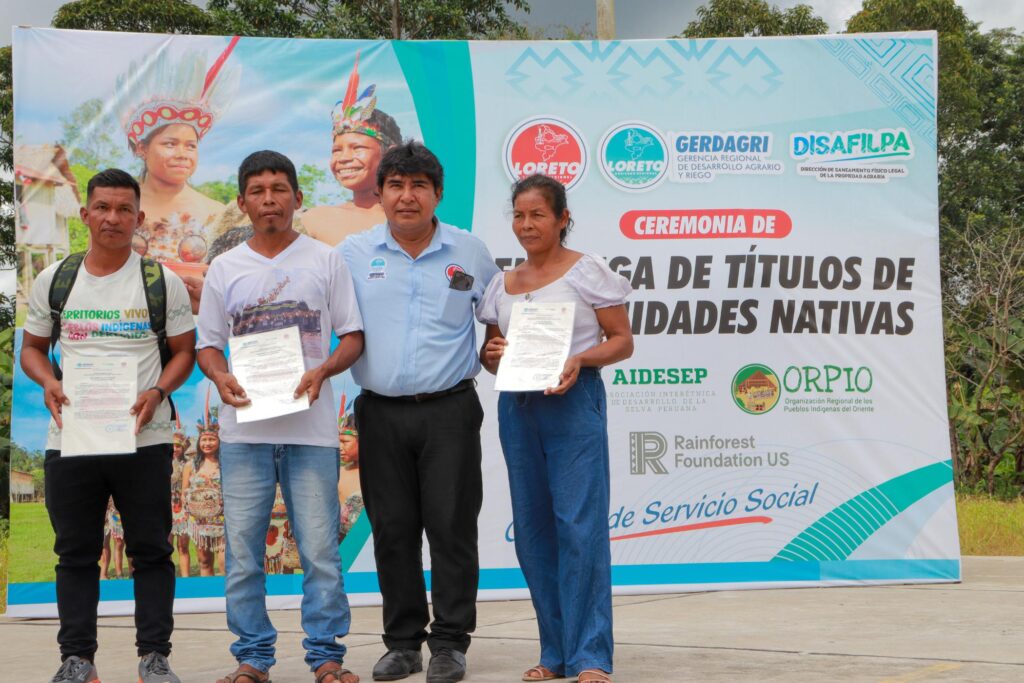
Territorial consolidation is an important component of this strategy’s success. Having several separate communities spread out over a large area means that there are untitled areas in between communities that are vulnerable to deforestation. So this is a good first step to both recomposing their ancestral territories and ensuring durable legal recognition. Territorial consolidation brings the legal borders of Indigenous communities more in line with their understanding of their territory as one contiguous area made up of multiple communities, rather than individual titled properties. Additionally, some titles have been nullified by the shifting banks of the Amazon River, a process made worse by soil erosion and flooding. Territorial consolidation allows for the rectification of borders and the consolidation of Indigenous gains. The government benefits, too, because illegal actors are denied the space to operate.
Da Silva has spent years dreaming of what legal recognition of their land would mean for the future. It is more territory to conserve and to monitor, but it is also more space to leave to his 13 year-old daughter and all of the children of the community. Da Silva’s next plan is to visit the community schools and talk to the students about the importance of the trees. “The trees give us life, they give us air, but they also feed us and let us progress,” he said. The difference between this generation and their grandparents’ is that now they have the tools and the strategy to defend what is rightfully theirs.




